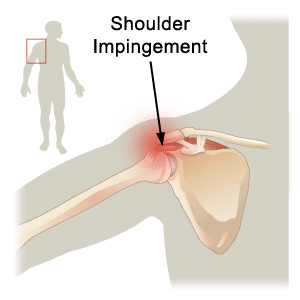5 Reasons Direct Rotator Cuff Exercises are Necessary in a Strength Training Program
If you’ve read much of my stuff, you’ve probably come to realize that I’m quite the shoulder geek. With that title comes a lot of questions at seminars and via email, and one of the more common ones is whether I think direct rotator cuff strengthening exercises are necessary for everyone. A lot of coaches say that they aren’t essential, but I beg to differ for five reasons. Here’s why:
1. Bad Posture – Nowadays, pretty much everyone has rounded shoulders – which means that the scapulae are winged out. When a shoulder blade isn’t sitting right, the rotator cuff muscles that attach to that scapula are at a mechanical disadvantage because they are outside of their ideal length-tension relationship for creating force; it’s analogous to trying to shoot a cannon from a canoe.
Incorporating some direct rotator cuff exercises not only strengthens muscles that you know will be operating at a mechanical disadvantage, but also educates a lifter about how the scapula should be positioned for ideal shoulder function.
2. Shoulder impingement is a physiological norm. – Research from Flatow et al. demonstrated that everyone – regardless of age, activity level, sport of choice, acromion type, gender, you name it – has direct impingement on their rotator cuff tendons. If you know a region is going to get beaten up regardless of what you do in your life, why wouldn’t you opt to strengthen it proactively?
3. Rotator cuff tears are far more common than you think. – In consideration of the previous point, it should be no surprise that rotator cuff tears are actually far more common than one might realize – even if you look at asymptomatic subjects. Connor et al. discovered that on MRI, 40% of asymptomatic tennis/baseball players had evidence of partial or full-thickness cuff tears. The general population is no different; Sher et al. took MRIs of 96 asymptomatic subjects, finding rotator cuff tears in 34% of cases, and 54% of those older than 60. And these studies don’t even include the ones who are actually in pain! It makes sense to strengthen these areas proactively – even if your shoulder doesn’t hurt…yet.
4. Lots of people also have labral tears. – In the past, I’ve written quite a bit about Active vs. Passive Restraints. In the shoulder, the rotator cuff would be considered an active restraint, as it’s something that can be strengthened to improve dynamic stability. The labrum, on the other hand, doesn’t get stronger with exercise; it’s a passive restraint that provides stability. So, if the labrum is torn or frayed (as it very commonly is in both lifters and overhead throwing athletes), then the active restraints – the rotator cuff tendons – need to pick up the slack.
5. The “Just do normal stuff and the rotator cuff will take care of itself” philosophy isn’t working. – That’s been tried for quite some time, and nowadays, as a society, we move like absolute crap and – as noted above – have a boatload of issues on MRI even if we’re asymptomatic. With respect to the cuff, we’ve built the deltoids up to the point that they absolutely overwhelm the rotator cuff (particularly the supraspinatus), which is trying to prevent the humeral head from migrating upward into the acromion.
My article, Clearing up the Rotator Cuff Controversy demonstrates some of our favorite rotator cuff exercises and talks about how to include them in a weekly strength training program.
For more information, check out the Optimal Shoulder Performance DVD Set.
Sign-up Today for our FREE Newsletter and receive a detailed deadlift technique tutorial!






